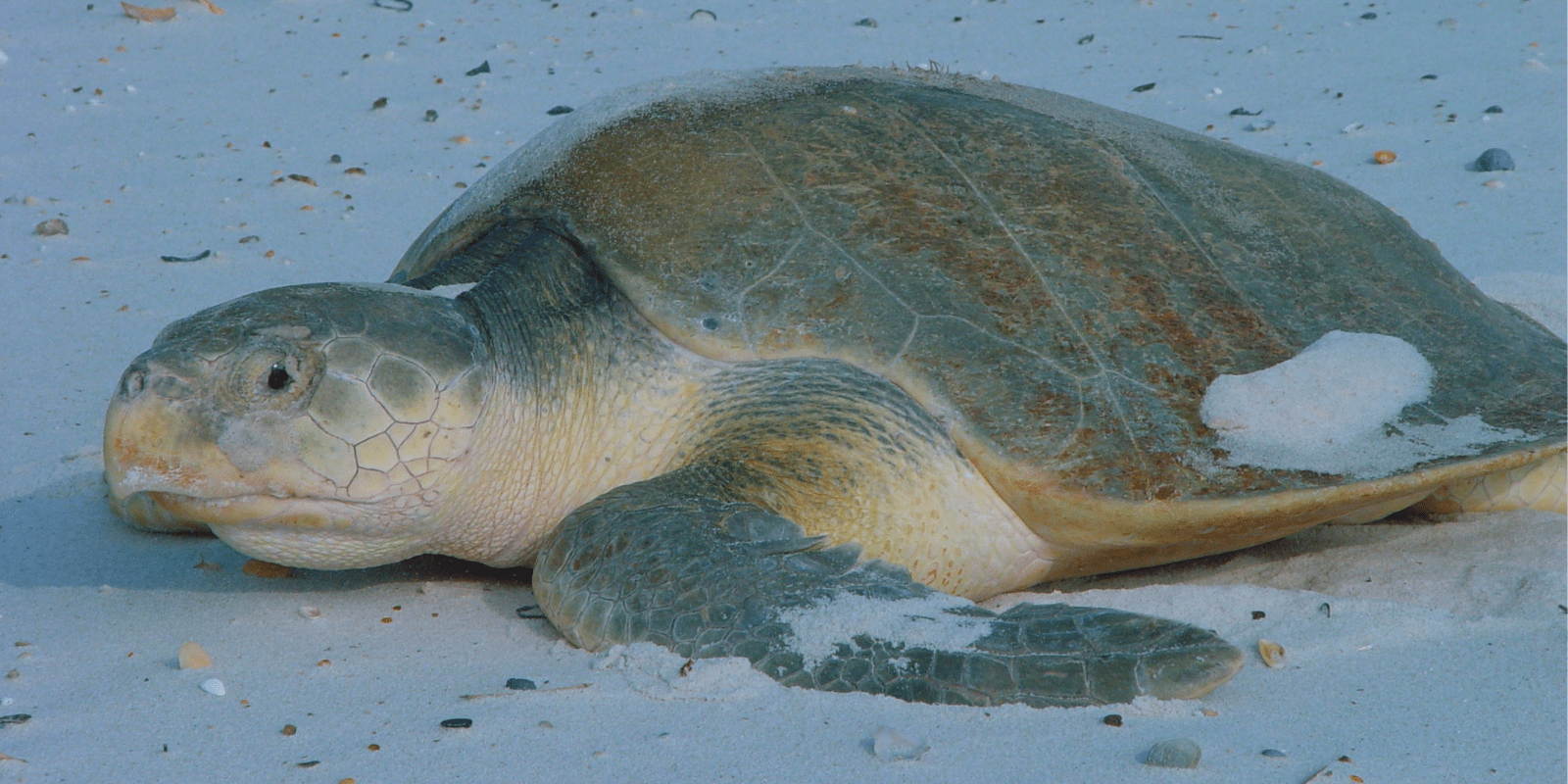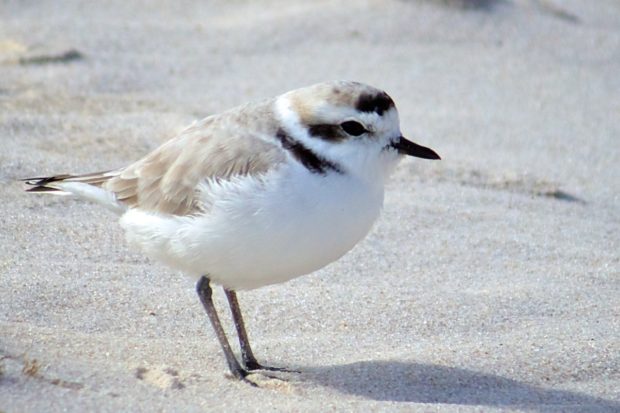We have much more to do and your continued support is needed now more than ever.
Restoring the Gulf by Protecting the Coast

When people think about “coastal restoration” they often imagine marshes being planted, oyster reefs created, and dunes being restored.
These are important ways to restore coastal ecosystems. However, sometimes simply protecting existing wild places is the most meaningful—and cost-effective—way to help an ecosystem at risk. For example, protecting existing marshes or dunes and the lands behind them can allow these important habitats to migrate inland, in response to sea level rise. Furthermore, protecting existing habitats connects people to nature, creates a sense of place, and supports outdoor traditions such as fishing, hunting, camping or kayaking.

Snowy plowers were affected by the Deepwater Horizon oil spill and their beach nesting habitats are sensitive to development pressure. Photo: USFWS.
The much-lauded recent addition of 470 acres to the Bon Secour National Wildlife Refuge along the Alabama Gulf Coast is a perfect example of how protecting habitat can make a difference. The diverse habitats of the refuge provide a home to several threatened and endangered species and serve as a key migratory stopover for more than 370 species of birds. This conservation success was made possible through a partnership between the U.S. Fish and Wildlife Service, The Conservation Fund and the Alabama Department of Conservation and Natural Resources, and was supported by diverse stakeholders ranging from local, state and federal officials to conservation partners, including the National Wildlife Federation. The project not only laid down a foundation for restoring coastal habitats but will also support the region’s abiding economic development.
More than 120,000 people visit the Bon Secour National Wildlife Refuge each year, contributing greatly to the regional economy. According to the state of Alabama’s most recent economic impact report in 2017, the Gulf Coast region accounts for 40% of the state’s tourism—more than any other region. In fact, the state’s coastal counties alone earned almost $2 billion in travel-related earnings in 2017. Preserving the Gulf’s natural resources therefore benefits local businesses and the regional economy. Nearly 70,000 people along Alabama’s southern shore are employed by tourism-related occupations both directly and indirectly; many of these jobs — particularly those related to commercial fishing — wouldn’t exist without a healthy ecosystem.

Alabama Governor Kay Ivey at an event celebrating the protection of these lands. Photo by Val Keefer/The Conservation Fund.
Before The Conservation Fund purchased the 470 acres as an interim landowner, the land was slated for residential and commercial development. Now, the site is in public ownership and will provide long-term support for those who depend on the land and water economically, while finally securing wildlife habitats that were first identified as needing conservation when Bon Secour National Wildlife Refuge was first created in June 1980.
After the Deepwater Horizon oil spill in April 2010, several separate funding streams were created to restore and protect important habitats, including legal settlement funds used to establish the National Fish and Wildlife Foundation’s (NFWF) Gulf Environmental Benefit Fund. This funding was critical to the Bon Secour National Wildlife Refuge conservation effort. A key tenet of the strategy for spending these Deepwater Horizon-related NFWF funds is to “maintain the ecological functions of landscape-scale coastal habitats, including barrier islands, beaches and coastal marshes, and ensure their viability and resilience against existing and future threats, such as sea level rise.”
Bon Secour’s beaches were badly oiled during the Deepwater Horizon disaster. While oil is no longer coating its shores, the impacts on Gulf wildlife—including many species that can be found at Bon Secour—continues. This year’s ninth anniversary of the Deepwater Horizon oil spill is a humbling reminder that there is still so much work to be done in the Gulf region, not only to restore impacts from the spill itself, but also to overcome the chronic degradation that has taken its toll over many decades.
It is also a reminder that the lion’s share of the restoration efforts as a result of the disaster is just beginning. A decade of payouts to come will ultimately result in hundreds of projects being funded, all with the aim of restoring and protecting the fragile Gulf ecosystem. But this funding is not enough to do everything that is necessary. Therefore it is imperative we invest these dollars wisely, prioritizing the projects that science indicates will have the greatest benefits for people and wildlife, economies and ecosystems, now and in the future.
Post written by Ryan Fikes, Staff Scientist for the National Wildlife Federation’s Gulf Restoration Campaign and Ray Herndon, The Conservation Fund’s Director of Conservation Acquisition for the Central Gulf & Lower Mississippi River Region.






















